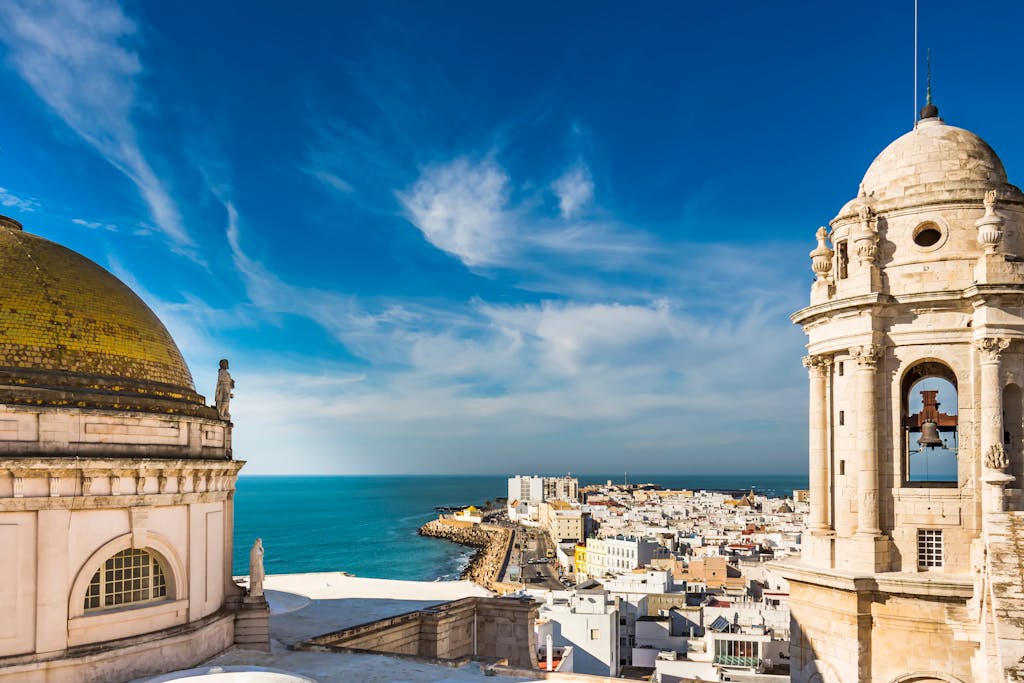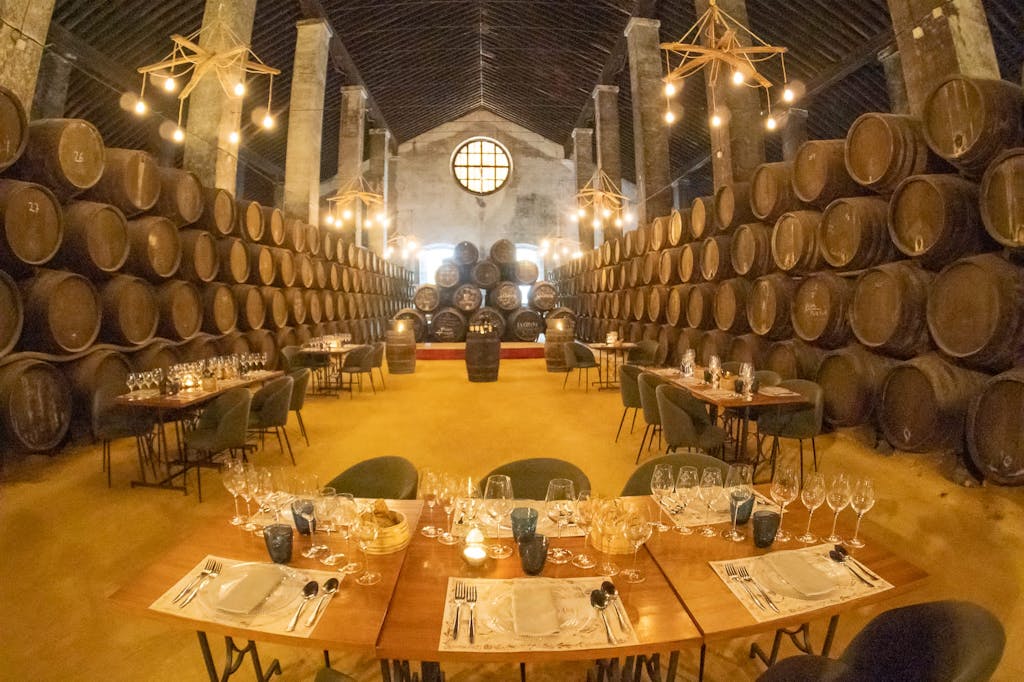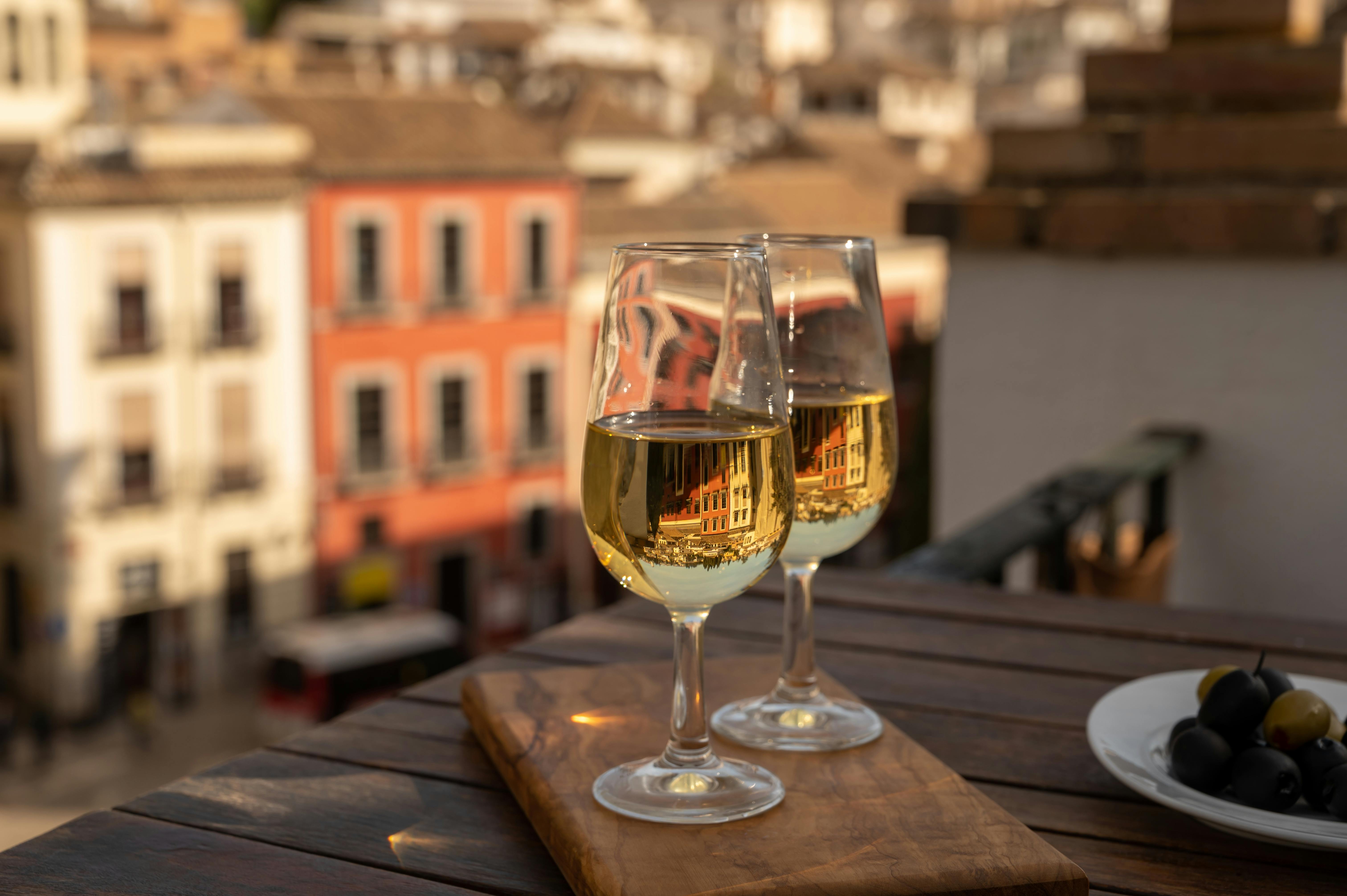In Spain’s Cádiz, S.A.L.T. Welcomes You to the Golden Triangle of Sherry’s Terroir
It’s hard to imagine a more fitting S.A.L.T. destination than Cádiz, that glistening city on southern Spain’s Atlantic coast whose 3,000-year history has been influenced by a second trinity: sea, sun and the white gold of antiquity, salt.
Founded by the Phoenicians around 1100 B.C., Cádiz is considered Western Europe’s oldest inhabited city. Once the center of a global salt trade, Cádiz produced salt of such superior quality that it was accepted as currency and over time would enter our vocabulary as “salary.” Later, it would come to be associated with another gastronomic prize: sherry.
Today Cádiz is energetic and fiesta-fueled, a swirl of white and gold set against a glassy sea whose 100,000 residents live on a strip of land jutting into the Atlantic like a ladle. Gaditanos are known throughout the peninsula for their biting wit, liberal spirit and celebration of food. Visit any time of year and you’ll find teeming tapas bars spilling into dimly illuminated plazas into the wee hours of the night.

The land of sherry
Sun, briny sea air and southern spirit, as well as geography offering access to both the Mediterranean and Atlantic, feeds this warm and welcoming seafood-obsessed populace.
Fifteen miles north, the Guadalquivir — Andalucía’s largest river — pours into the Atlantic in Sanlúcar de Barrameda, a miniature-sized Cádiz whose history and cuisine punch well above its weight. (Columbus departed here on his third voyage in 1498 and Magellan in 1519.)
Sanlúcar, for short, forms the northern point of the Golden Triangle, a constellation of three sun-drenched towns that comprise the geographic appellation of sherry. (The other towns are El Puerto de Santa María and Jerez de la Frontera, whose mispronunciation by the British gave birth to the word “sherry.”) Except here it’s not called sherry but manzanilla. Dry, floral and faintly saline, it cuts heavenly through succulent king prawns, sweetly perfumed fish stew and crispy fried tortilla de camarón, local delicacies that earned Sanlúcar the title Gastronomic Capital of Spain in 2022.
S.A.L.T. guests see, smell and taste all this as we join Victor Vidal for a firsthand exploration of the Golden Triangle, home to the beloved dry sherry of Cádiz. After a visit to Bodega Hidalgo’s private vineyard to learn about palomino grapes and albariza terroir, guests enjoy a private tour of the bodega, the oldest in Cádiz, dating to 1792, rare barrel tastings of 30-, 50- and 60-year-old VORS sherry and a multicourse seasonal lunch displaying the best of Sanlúcar’s prized local cuisine.
Stepping out of the car on a brilliant May morning, I meet Victor Vidal. Victor was born in Sanlúcar and has been working since 2015 at Bodegas Hidalgo, the oldest producer of manzanilla in all of Cádiz province. Equipped with slick black hair and the fastest castellano I’ve ever heard, he embodies Spain’s south: sharp and genteel, Victor speaks in anecdote and wears his pride for Cádiz on his perfectly creased black sleeve.

We have come to Bodegas Hidalgo’s vineyard to see albariza, the terroir of the Golden Triangle whose compact rock retains the humid Atlantic breeze and infrequent rains that see the grapes through the endless summer. An expansive Rothko produces itself in front of me — three massive monochrome bands of cerulean sky, infinite blue sea and blinding white. The white is albariza, owing its color to calcium carbonate, ancient marine fossil and clay, not dissimilar to the chalky cliffs of England’s Dover or the substrate of France’s Burgundy. Together these factors favor the region’s three principal grapes: Palomino, Pedro Ximénez and muscatel.
Entering Sanlúcar we arrive at the bodega, an imposing structure painted crisp white, where today Fermín Hidalgo commands the eighth generation of the family business started in 1792. Victor unbolts the wooden door and leads me to a marvelous central courtyard outfitted with giant swaying palm fronds and brilliant purple flowers; a side room, once the study of Don José Pantaleón Hidalgo, patriarch and founder, is decorated with vintage sherry posters, maritime maps of Cádiz and generations of confident family portraits.
On a stocky wooden desk lay an accounting book opened to an entry dated 1897. Across the courtyard a dimly illuminated tasting room with plush leather chairs, huge ashtrays and several wooden barrels stacked solidly atop one another bearing the word VORS. The scene feels intimate and confidential, as if I’ve been let in on some great family secret. The lettering stands for Vinum Optimum Rare Signatum and luck would have it the British translated this too, to Very Old Rare Sherry. Rare indeed — Victor presents a long tube and we barrel taste 60-year-old palo cortado, as dark as amber.
A lunch to remember
We head to la catedral for lunch, a colossal space whose dimensions baffle the eye, its slanted ceilings reaching 100 feet at center. Rows of barrels stacked like firewood, each with a different scribbling, number in what seems like the thousands. The air is still and balmy, an occasional salty breeze entering through the only windows near the ceiling. Naturally occurring mildew covers the otherwise whitewashed walls, safeguarding the holy contents within the barrels. I understand why they call this room the cathedral.

In many ways manzanilla production is the antithesis of wine making, with a set of practices and complexities all its own. Ample space is left in the barrel — blasphemy in the wine world — where, over time, the oxygen facilitates a layer of yeast known as rama. This not only protects the young sherry but also keeps it fresh and light, lending notes of nuts and apples, and a lovely salty, savory balance. The briny Atlantic air flowing through the open windows penetrates the porous barrels of American oak. The solera system, in which wines of different vintages are mixed in specific proportion, yields complex and multilayered sherries that can be aged for up to a century.
Lunch is one glorious dish after the next, the breadth of Sanlúcar’s maritime and agricultural bounty on full display. Smoked sardine, delicate and earthy, is served atop marinated tomato sofrito; luscious bluefin tuna belly, caught just beyond the Strait of Gibraltar, with organic tomato emulsion; lightly battered baby hake with citrus mayonnaise. The roasted potato and peppers are cultivated using the navazo technique unique to Sanlúcar, whose saline-rich estuary makes any further seasoning superfluous. It’s unlike anything I’ve tasted. My mind wanders down the road to where Columbus departed, his galleys to return from the New World with many of the vegetables I have in front of me.
The main dish is fish stock rice with gambones — king prawns sautéed in manzanilla, their blood-red color electrifying my plate. Not a bottle was placed on the table. All the wine is fed directly from the barrels in a series of transparent tubes where colors vary from pale chestnut to crimson. Dessert is homemade flan topped with sweet Pedro Ximénez toffee. A few sips of 65-year-old vintage sherry washes it down with unctuous satisfaction.
I recall a conversation I had not long before with Adam Sachs, Director of S.A.L.T., over dinner in Barcelona. “There are so many food stories,” he says, as we crack open huge grilled mussels with our hands. “The truly compelling, exciting ones where every detail plays a role and really help you understand a place — those are the ones we’re after.”
My gaze returns to Victor as flashes of color, taste and history coalesce: the potatoes, the Atlantic breeze, the riches of an ancient maritime empire and the reason I ask for one more glass of manzanilla — the vital little speck tying this beautiful land of plenty together — the white gold of antiquity, salt.
About S.A.L.T.
S.A.L.T. is an immersive culinary program that — through engaging shore excursions that focus on local food culture and hands-on onboard experiences — offers Silversea guests a chance to travel deeper around the world. And the name? That’s simple — S.A.L.T. stands for Sea And Land Taste. Read on for more information about S.A.L.T.
Ready to immerse yourself in the history and production of sherry in this prized terroir? Check out the Silversea itineraries that call on Cádiz.
